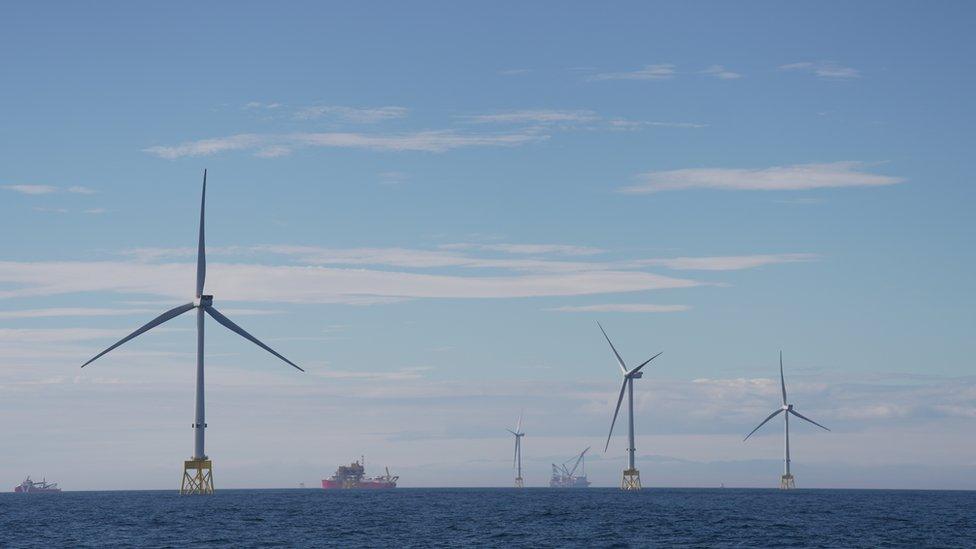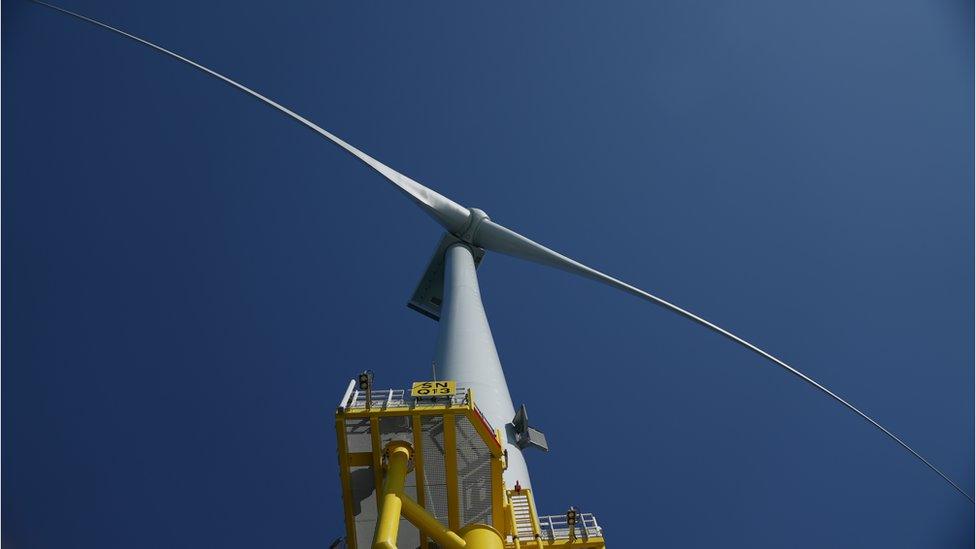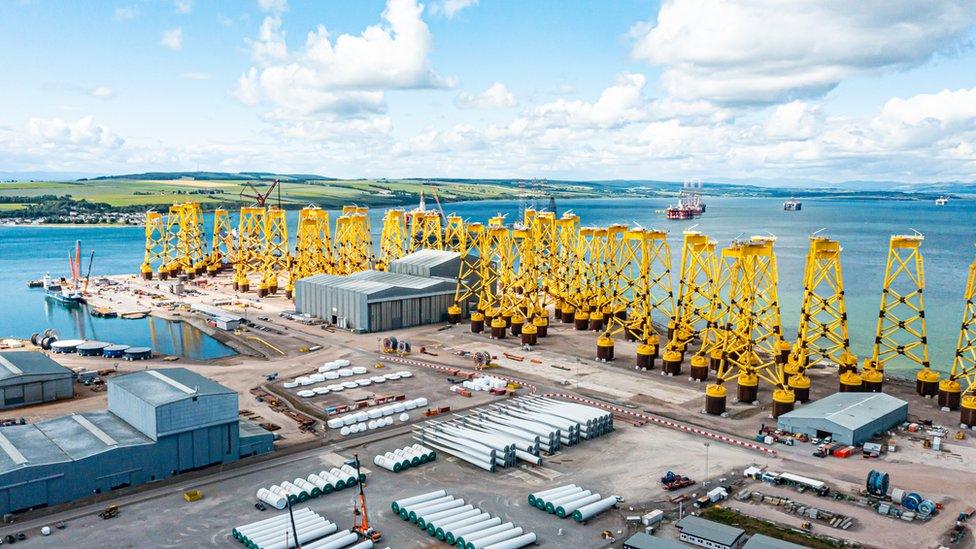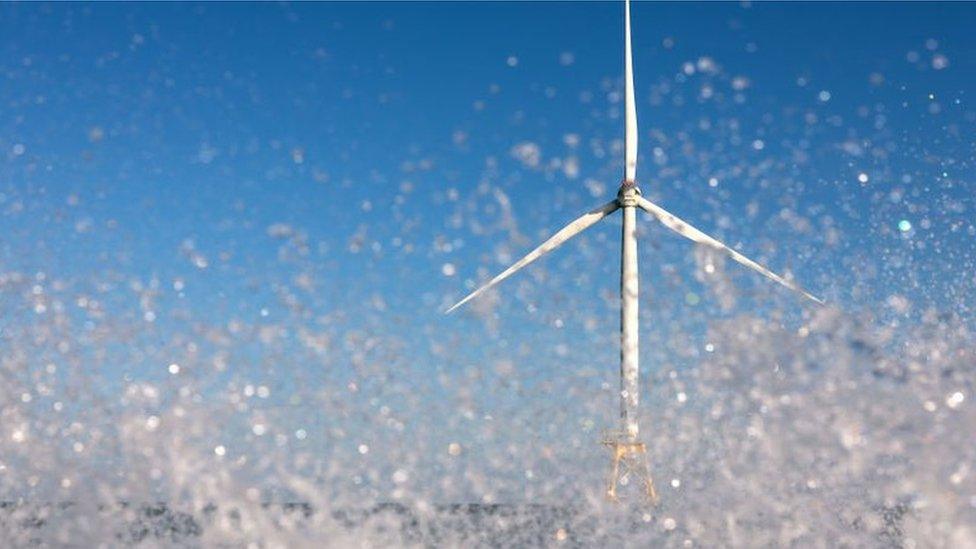Scotland's biggest offshore wind farm to generate first power
- Published
- comments

Scotland's biggest offshore wind farm has begun generating power.
Seagreen, which is located about 27km (17 miles) off the Angus coast in the North Sea, has been in development for more than a decade.
When fully operational, it will have 114 turbines and generate 1.1 gigawatts (GW) of electricity - enough to power about one million homes.
Each will have a maximum tip height of 187m (614ft), which is about twice the height of the tower housing Big Ben.
Seagreen is also the deepest wind farm to be fixed to the seabed in the world.
The £3bn project is a joint operation between SSE Renewables and TotalEnergies, and it is expected to be completed next year.
The companies say it will eventually displace more than two million tonnes of carbon dioxide from electricity generated by fossil fuels every year.


Way out in the North Sea, a monster is stirring.
The numbers tell you that Seagreen is a vast and expensive project — but it's only when you are right underneath one of its giant turbines that you get a true sense of the scale.
SSE says the blades whizzing above my head are reaching almost twice as high as the tower housing Big Ben and, bobbing on the sea below them, I can fully believe it.

When the project is completed and running at full tilt the developers say it will be able to power the equivalent of two thirds of all the homes in Scotland.
They're hopeful too that it will eventually push down the cost of energy by reducing the UK's reliance on expensive imported gas.
But eventually is not a word which will bring much comfort for families and firms struggling to pay their bills this winter.

At the peak of its construction, the project is expected to support about 3,000 jobs directly and indirectly.
The turbines' jackets - or foundations - were assembled at the Port of Nigg on the Cromarty Firth.
When it is operational, the wind farm will support about 700 jobs, with about half based in Scotland.
Scotland currently has around 1.9GW of offshore wind installed, according to Scottish Renewables, external.
However, the Scottish government has set a a target of increasing this to 11GW by 2030.
On Monday, the government announced wind farm agreements for three new developments in the waters around Shetland.
The projects are expected to generate a total of 2.8GW of electricity.

The wind turbine jackets have been assembled at the Port of Nigg.
Earlier this year the chief executive of SSE Alistair Phillips-Davies said ramping up investment in "low-carbon infrastructure" such as wind power was a vital step towards tackling the current energy crisis, which he blamed on the UK's "reliance on imported gas."
British households are due to find out the extent of the next rise in their bills when a new energy price structure is announced by the industry regulator Ofgem on Friday
There are predictions that the average annual household bill could rise from £1,971 to more than £3,500 after that announcement before jumping again to more than £4,600 after the next review in January.
Soaring bills for customers have led to calls for a windfall tax to be imposed on energy firms but writing in the Financial Times this weekend, external Mr Phillips-Davies - whose pay package jumped sharply to £4.5m in 2021 - proposed an alternative whereby electricity companies would voluntarily sell renewable production below the wholesale market rate for energy, which is currently skewed by high global gas prices.
His remarks came after the Prime Minister Boris Johnson and Chancellor Nadhim Zahawi met utility firms including SSE to discuss the cost of living emergency
Related topics
- Published22 August 2022
